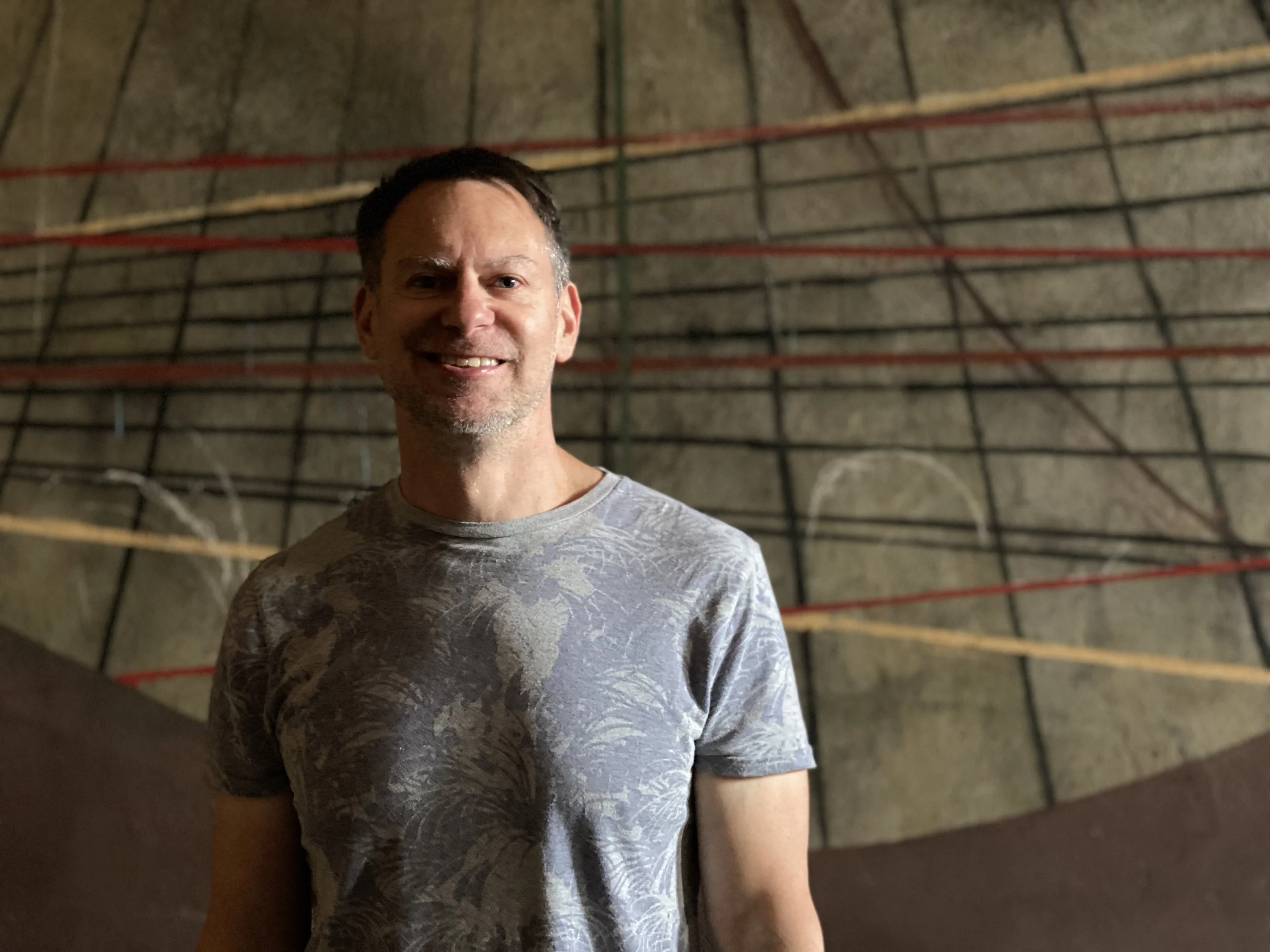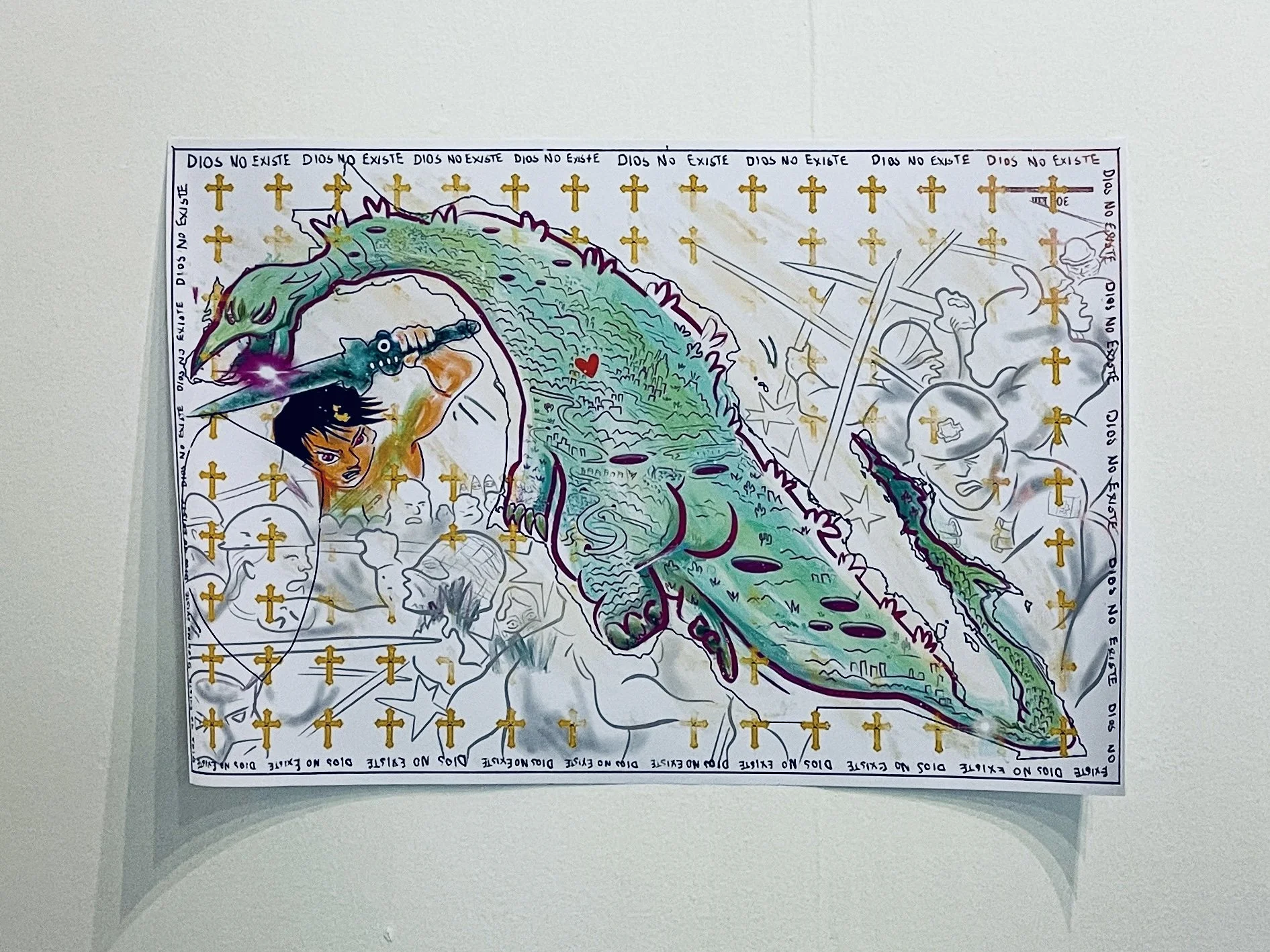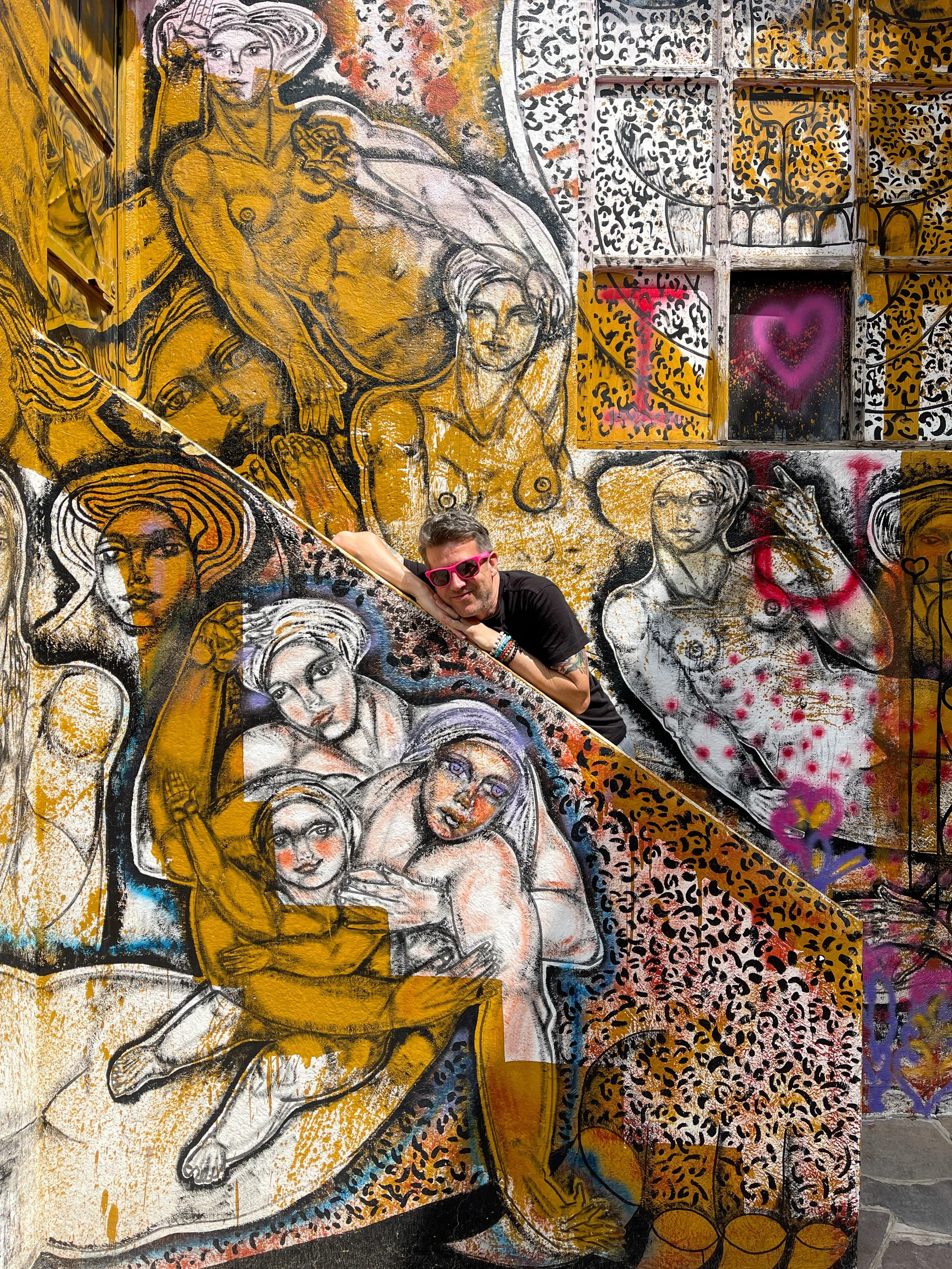Like many of the most beautiful buildings in Mexico, the Ignacio Ramirez the Necromancer Cultural Center was once a convent. Now this San Miguel de Allende landmark is filled with dramatic murals by David Alfaro Siqueiros, Pedro Martínez and Eleanor Cohen.
The centerpiece of the gorgeous courtyard at the cultural center is a fountain topped with the Christian Lamb of God. Keep in mind that this was once the cloisters of a convent.
Days before her death, Sister María Josefa began to cough up larvae. “The pain was so acute that she fainted,” wrote Miguel J. Malo and F. León de Vivero in the now-out-of-print guidebook San Miguel Allende. Despite her discomfort, she’s said to have kept the larvae — which later transformed into butterflies.
The nearby Iglesia de la Concepción was once connected to a convent, which gave the church its nickname, Las Monjas (the Nuns).
The beguiling former 18th century Convento de la Concepción was founded in 1736 by María Josefa Lina de la Canal y Hervás, the daughter of the influential de la Canal family. At the age of 15, María Josefa’s parents died, and she inherited a large sum of money, which she used to construct la Iglesia de la Concepción, known locally as Las Monjas (the Nuns), and the adjoining convent.
A bust of Ramírez sits atop a pedestal in the courtyard.
“El Nigromante (The Necromancer) was the pseudonym used by Ramírez, a lifelong champion of atheism and freethinking, to conceal his identity in the radical articles he wrote.”
An iron sculpture of a bull by David Kestenbaum stands sentinel in front of the bright yellow façade of the former Convento de la Concepción.
From Convent to Cultural Center
In 1938, after a series of other uses, the complex was converted into the secular Escuela Universitaria de Bellas Artes by Peruvian painter and political-activist-in-exile Felipe Cossío del Pomar. It is now known as the Centro Cultural Ignacio Ramírez “El Nigromante,” in honor of the progressive thinker by that name. El Nigromante (the Necromancer) was the pseudonym Ramírez used to conceal his identity in the radical articles he wrote, which would have surely upset the conservative governing authority of the time. A lifelong champion of atheism and freethinking, Ramírez caused a scandal, for instance, when, in a speech to the literary Academy of San Juan de Letrán, he declared that God didn’t exist.
A quilt artwork was hanging in the courtyard, with Las Monjas church in the background.
Enjoy the tranquil atmosphere of the Centro Cultural Ignacio Ramírez.
Various artworks fill the grassy courtyard of the cultural center.
Las Lavanderas (The Washerwomen) by Eleanor Cohen
The Washerwomen Mural
The inner courtyard of the former cloister is surrounded by a succession of contiguous arches. As Wally and I walked beneath them, we discovered a fresco by the American artist and printmaker Eleanor Cohen. The piece is known as Las Lavanderas, (The Washerwomen) and was influenced by the figural style of the famous muralist José Clemente Orozco.
Cohen and her husband, Max Kahn, were both Works Progress Administration artists paid by the federal government to promote pride and patriotism through public art during the late 1930s. She was the first female recipient of the James Nelson Raymond Traveling Fellowship from the School of the Art Institute of Chicago and she used it to study at the Escuela Universitaria de Bellas Artes in San Miguel de Allende. Kahn taught printmaking there, and Cohen began working on the mural in 1941. Her painting depicts indigenous peasant women washing clothing at a river with a group of children bathing in the foreground. I love that a mural that has a similarly emotive power as the works of Diego Rivera and Orozco was painted by a non-native woman — quite unusual for the time.
As we entered the room housing Siqueiros’ unfinished work, Wally was startled by the guard sitting against the wall. In his defense, the room is dimly lit.
Siguiero’s Unfinished Work
Stirling Dickinson, an American credited with helping establish San Miguel de Allende as an arts center, became the director of the school shortly after his arrival. During his tenure, he invited the celebrated Mexican muralist David Alfaro Siqueiros, an outspoken Mexican Communist Party member, to teach at Bellas Artes in 1948.
His students, who were predominantly U.S. and Canadian war veterans, were enthusiastic about painting a mural under Siquiero’s direction. However, he quickly exceeded his modest art class budget, and abruptly departed after a quarrel with the school’s administrative director, Alfredo Campanella, over funding.
Duke in the nuns’ former dining hall, now home to an unfinished work by the legendary muralist Siquieros
The impressive unfinished work, Vida y Obra de General Ignacio Allende (Life and Work of General Ignacio Allende), can be found in a room along the north wing, fittingly called the Sala Siquieros. The cavernous space once served as the convent’s dining hall. The intent of the mural was to depict the life of Allende, a leader of Mexico’s War of Independence so well respected that the town, once called San Miguel el Grande became San Miguel de Allende after his death.
A cartoonish detail from Vida y Obra de General Ignacio Allende reveals Siqueiros’ process.
Entering the room and looking up, I noticed a playful almost cartoonish face with elaborate curlicue scrollwork around it. Elsewhere, lines, colors and geometric shapes crisscrossed the walls and vaulted ceiling where painted flames shoot across the ceiling and explode above what looks like an aerial view of farmland. In my opinion the unfinished state of the mural makes it more interesting, as it provides the viewer with a glimpse into the creative process of Siquieros.
Not surprisingly, El Fanatismo del Pueblo by Pedro Martínez, with its giant vampire bat attack, was Duke and Wally’s favorite mural at the cultural center.
Superstition and Drinking Culture in Martínez’s Paintings
Elsewhere within the complex are four works by Pedro Martínez. In 1941 Martínez was invited by Cossío del Pomar to teach the fresco technique to students at Bellas Artes.
His mural El Fanatismo del Pueblo (The Fanaticism of the People) vividly depicts a winged creature attacking a group of women who cower in fear as two caballeros attempt to lasso the flying beast. The fresco is referred to as La Caza del Vampiro (The Vampire Hunt) by locals and is perhaps a criticism of those who naively believe in superstitions.
Head into the bookstore to see another Martínez mural, La Cantina.
Another of Martínez’s murals can be found in the bookstore. Simply titled La Cantina, the vignette shows a group of men gathered in a tavern drinking pulque. A man in a sombrero leans against the bar, a bemused expression on his face. To his right, a man looks over his shoulder in annoyance. The four men seated in the foreground lean in to listen to a man wearing a pink shirt tied with a bow, who, judging by his body language and snarling mouth, appears to be angry.
Explore the galleries at the Centro Cultural Ramírez to see the current exhibitions.
The Clamor Progresista Exhibit
When Wally and I visited, there was an exhibit titled Clamor Progresista (Progressive Cry), inspired by the ideas of “the Necromancer,” such as creative freedom and how these ideas are open to interpretation. The project is led by Mexico City-based conceptual artist Abraham Cruzvillegas, who invited more than 60 artists from the state of Guanajuato to create works using multiple formats, from sculpture to paper.
Part of the Clamor Progresista exhibit
A cool mobile-like sculpture on display when we visited
Today the cultural center belongs to the Mexican National Art Institute (INBA) and offers classes in drawing, painting, sculpture, dance and music. It’s worth stopping by just to admire the beautiful courtyard. And be sure to check out the charming shops across the street, including Origenes Antigüedades Populares. –Duke
While you’re in the hood, stop into Origenes Antigüedades Populares.
The shop is filled with antiques, many of which are of a religious nature.
See more amazing murals and read about the Instituto Allende, another art school in San Miguel de Allende.
When you see the bull, you know you’ve come to the right place.
Centro Cultural Ignacio Ramírez “El Nigromante”
Calle del Dr Hernandez Macías 75
Zona Centro
37700 San Miguel de Allende
Guanajuato
México









































